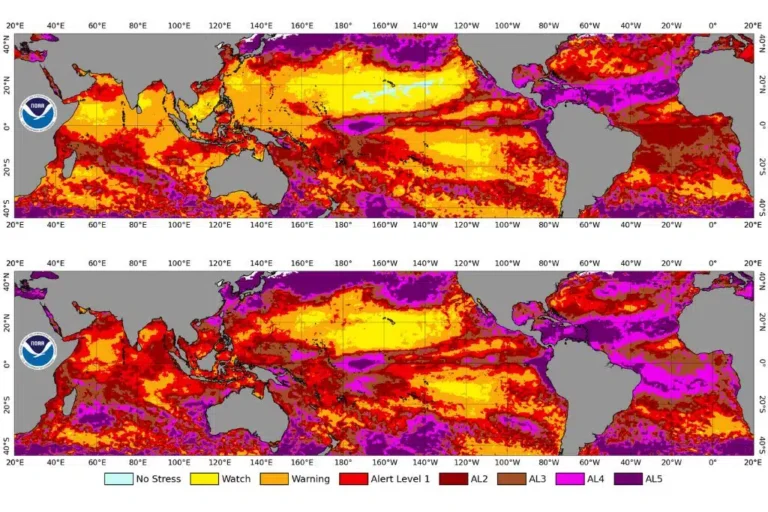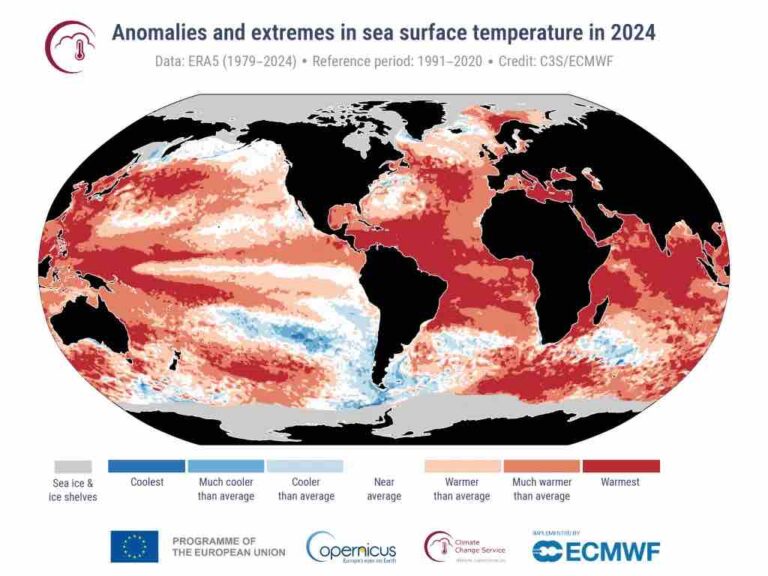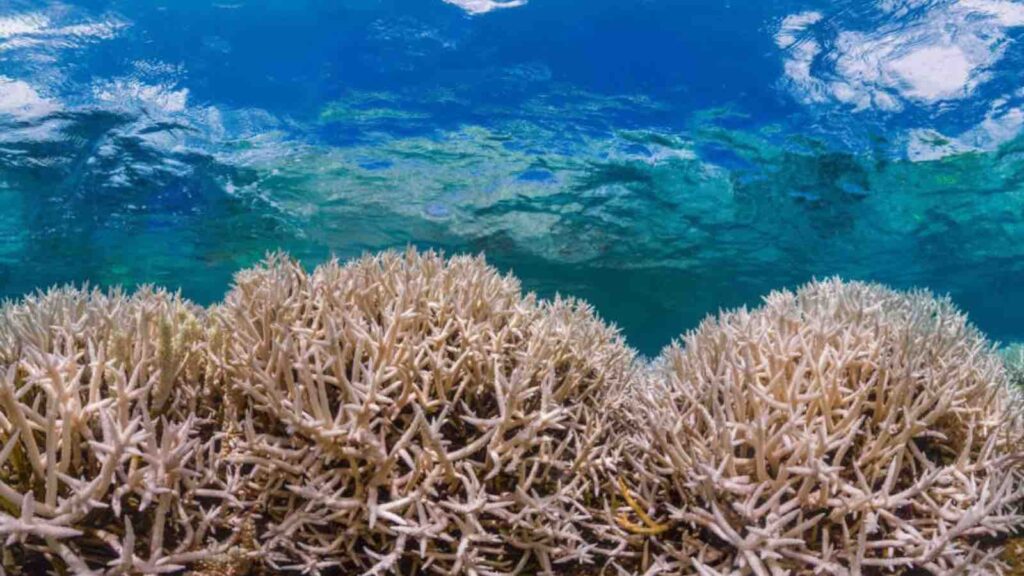Triggered by record-breaking ocean temperatures, this mass bleaching, which began in January 2023, has affected coral ecosystems in at least 83 countries and territories, from the iconic Great Barrier Reef in Australia to the Persian Gulf, the Caribbean, the Red Sea, and beyond.
In an unprecedented blow to marine biodiversity, scientists have confirmed that 84% of the world’s coral reefs are now under threat from the largest global coral bleaching event ever recorded. Triggered by record-breaking ocean temperatures, this mass bleaching, which began in January 2023, has affected coral ecosystems in at least 83 countries and territories, from the iconic Great Barrier Reef in Australia to the Persian Gulf, the Caribbean, the Red Sea, and beyond.
RELEVANT SUSTAINABLE GOALS



The US National Oceanic and Atmospheric Administration (NOAA) announced last week that this event surpasses all previous bleaching events, eclipsing those recorded between 2014-2017 and 1998. This fourth global bleaching episode highlights an alarming trend: ocean heatwaves are becoming more frequent, widespread, and devastating.
The Unseen Fires Beneath The Waves
Coral reefs, often called the “rainforests of the sea,” are among the most biodiverse ecosystems on Earth, supporting one-third of all marine species and the livelihoods of nearly a billion people. But as NOAA’s Coral Reef Watch director Dr. Derek Manzello warns, “the warming seas have reached levels where no reef is safe.”
Raja Ampat in Indonesia, once considered a thermal refuge, and even the coral-rich Teluk Eilat have not been spared. These bleaching events occur when rising ocean temperatures expel the vital algae that live within coral tissues, stripping reefs of their vibrant colors and essential energy sources. Without these algae, corals weaken, become prone to disease, and face reduced reproductive capacity.

Rising Ocean Heat: A Dire Trend
According to the World Meteorological Organization (WMO), the past eight years have consecutively set new records for ocean heat content. Alarmingly, the warming rate between 2005 and 2024 has more than doubled compared to 1960-2005. Last year, 2024, marked the highest ocean heat levels in the WMO’s 65-year observational record, and this relentless heating is pushing coral reefs to their breaking point.
According to the World Meteorological Organization (WMO), the past eight years have consecutively set new records for ocean heat content. Alarmingly, the warming rate between 2005 and 2024 has more than doubled compared to 1960-2005. Last year, 2024, marked the highest ocean heat levels in the WMO’s 65-year observational record, and this relentless heating is pushing coral reefs to their breaking point.

Coral reefs are critical not only for biodiversity but also for human economies. Globally, they provide ecosystem services valued at up to $9.9 trillion annually, including fisheries, tourism, and coastal defense against storms and erosion. Yet, despite their immense value, reefs are disappearing at an alarming pace. The Global Coral Reef Monitoring Network (GCRMN) reports that the world has already lost about 14% of its coral cover since 2009.
This crisis is compounded by the fact that even sites once seen as natural sanctuaries are no longer immune. Areas previously resilient to warming waters are now buckling under unprecedented heat stress, raising urgent questions about the future of global coral conservation.
The Call to Action: Protecting Reefs in a Warming World
While conservationists and scientists work tirelessly to protect and restore coral reefs, they face mounting challenges. Marine protected areas, coral restoration projects, and local conservation efforts play a role, but experts stress that without global climate action to reduce greenhouse gas emissions, these efforts may only delay the inevitable.
The stark reality is that coral reefs, vital to both marine life and human well-being, are now at a crossroads. The current bleaching crisis is not just an environmental issue – it is a humanitarian, economic, and cultural crisis.
As policymakers, industries, and communities around the world grapple with the escalating impacts of climate change, the survival of Earth’s coral reefs stands as a defining test. Will humanity rise to the challenge and safeguard these natural treasures, or will we stand by as one of the planet’s most precious ecosystems fades away?
For now, the reefs continue to bleach. Whether they will recover, or vanish, depends on decisions being made today.
You may also be interested in :
Coral Triangle Nations Forge Conservation Targets For 2025 Amid Rising Threats




